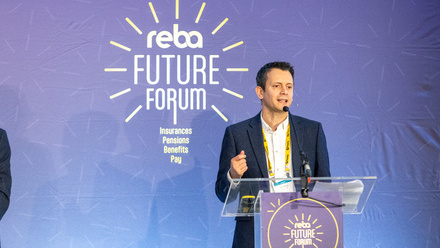How are employee benefits changing in EMEA as a result of the pandemic?

The current benefits landscape
While the pandemic was being addressed with different approaches, and different levels of competence by governments around the world, one thing was universal: the increased duty of care placed upon employers. This isn’t a new concept, governments under pressure from the burden of ageing populations with expensive care requirements have been relying on employers to carry some of the load for some time now. The pandemic, however, further highlighted the expectations on employers to support and protect their people through benefits.
Many of these benefits are not new, but a growing engagement with benefits is being driven by the increasing desire for protection during Covid-19. Among our multi-national customers, we’ve seen a 5% increase in employee engagement with benefits and an 8% increase in benefit selections (rising to 20% in sectors most affected by the pandemic).
For example, prior to the pandemic, telehealth was already growing in popularity. However, (perhaps because it’s the health benefit equivalent of Zoom), since the start of the pandemic usage has increased by almost 600% (Cigna Global). Whether take-up levels continue post-pandemic remains to be seen, but it is unlikely that they will go back to pre-pandemic levels. Employees have embraced the ease of use, employers have noted the increased productivity, and underwriters have witnessed a decrease in loss ratios as this lower cost technology provides earlier intervention and therefore reduced long-term costs.
The downturn of gym benefits was an unsurprising result of lockdowns. It’s likely to bounce back once life returns to a post-pandemic normal across EMEA, but the structure of these benefits has already changed to offer gyms closer to home-working locations, and we’ve seen particularly high take-up of this model in Israel. Gym membership and lunch vouchers in central business districts are now not as valued as those that are nearer to the employees’ homes. As EMEA emerges out of lockdown the new breed of hybrid worker will need to be catered for, so benefits need to remain adaptable.
An accelerated three-pronged approach
In terms of strategic approaches to employee benefits, one positive trend we’ve seen is geographic democratisation. While employers have always had to account for differences in culture, regulation and state provisions, the global nature of the pandemic has meant that benefit requirements have had to be addressed globally. As Covid-19 swept across EMEA, the first queries raised by employers were ‘Are my benefits fit for purpose globally?’. Specifically, did the life and medical benefits provide cover for Covid-19? It was reassuring to see that most insurers across EMEA had cover for pandemics and either provided additional clarification and reassurance or added enhanced cover options where necessary.
When it comes to wellbeing, again we’ve seen an accelerated response from global organisations. Employers in countries such as Poland, where there wasn’t previously a large interest in mental health provision, have begun to engage more with these benefits, and local brokers in Poland expect the mental health focus generated by the pandemic to continue. In fact, most brokers and consultants across EMEA say the increased engagement in mental wellbeing and telehealth are the two fundamental changes noted since the beginning of the pandemic.
It’s not just physical and mental wellness that has been brought into focus by the pandemic. The pandemic eroded financial resilience for millions of employees in 2020. A recent OECD study showed that, across G20 countries, only 52% of adults reached the minimum target for six out of the nine financial wellbeing behaviours they identified, including making informed choices about financial products, saving and financial goal setting. While solutions vary from country to country, the themes remain universal: retirement, healthcare, and maintaining a standard of living.
Thus, wellness is now a truly three-dimensional entity throughout EMEA. The pandemic has placed a strain on all three points of the wellness triangle (physical, mental and financial) and employers are addressing these pain points by ensuring benefit provision has provided access to solutions for their remote workforces.
Other key benefits changes
While a large part of employee benefits provision has inevitably been about protecting employees, we’ve also seen an uptick in the trend towards socially responsible benefits – perhaps driven by how the pandemic has changed our thinking about what’s really important in life. Hence, we’ve seen growth in environmental investments for pensions across EMEA, green benefits such as bicycle schemes in the Netherlands and Germany, and electric car schemes in the UK.
With regards to benefit delivery, making sure that employees understand what is available to them, and can easily access it, is more important than ever. With less reliance on face-to-face channels, employers who operate in multiple countries should look first to their employee benefits platform to deliver the message, because these systems are already tailored regionally around relevant benefits.
In conclusion, the pandemic has not necessarily led to a revolutionary creation of new benefits, but instead has driven a speedier evolution towards more consistency in benefits provision across EMEA. Benefits have gone from a tick box feature of employment to something that adds value to the employer brand and is genuinely appreciated by employees. All of which should make the ability to implement a global benefit strategy easier for the global benefits manager.
The author is John Hunt, global benefits director at Benefex.
This article is provided by Benefex.
Supplied by REBA Associate Member, Benifex
The home of award-winning employee benefits, reward, recognition, & communications.







